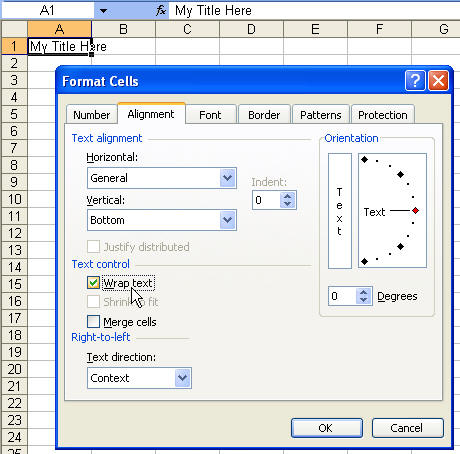
- #Carriage return in excel mac os mac os x#
- #Carriage return in excel mac os portable#
- #Carriage return in excel mac os mac#
- #Carriage return in excel mac os windows#
#Carriage return in excel mac os windows#
if it’s a Windows –> *Nix transfer, the CR characters will be removed, and if it’s a *Nix –> Windows transfer they will be added. If you use the ASCII mode, however, and you peform that same transfer, the CR / LF conversions are done for you, i.e. If a text file is transfered between a *Nix and Windows box (or vice versa) using this mode the symptoms mentioned above will surface. Well, if you use Binary, files are transfered “bit for bit”, or exactly as they are between the source and destination. To start with, if you have ever used one of the more advanced FTP programs you’ve probably noticed the Binary and ASCII options. The good news is that there are plenty of ways to fix this problem. On the other hand, if you transfer a file from a *Nix machine to a Windows machine in the same way, you’ll end up with a bunch of lines joined together by little boxes where there are supposed to be line breaks (because the lines are lacking the CR character). CHAR function returns the result on the base of a character code. of cells but add a line break in a large number of cells and use the CHAR function. A keyboard shortcut is a good way to insert a line break in a small no. Things to Remember About Line Break in Excel. How this ends up playing out is that if you write a file in Windows and transfer it bit for bit to a *Nix machine, it’ll have extra CR characters that can cause all sorts of havoc. Carriage return brings the cursor to the beginning of the current line.
#Carriage return in excel mac os mac#
Many older Mac applications use Mac-style line endings. This means that each line in a text file ends with a newline character (character 10/0xA, often abbreviated LF).
#Carriage return in excel mac os mac os x#
Command-line tools in Mac OS X (and other UNIX or Linux variants) use UNIX-style line endings. Does Windows add the extra stuff, or does Linux? What exactly is the extra stuff? How do I get the stuff out? Does Mac use LF or CRLF Nowadays Mac OS uses Unix style (LF) line breaks. If you're on a Linux system and need to preserve the line breaks from an old Mac file, sed -i.If you’re like I used to be, you always have trouble remembering the difference between how Windows and Linux terminate lines in text files. (A Linux system reading an old Mac file will think that all the text is on one very long line and only convert the first \r. If you're on macOS, the /g isn't needed, either, because macOS recognizes the single \r as a line ending.

If you're cleaning up a Windows file, the /g is not needed on any *X system. 2001) or earlier ended each line of a "plain text" file with a single \r. Notepad) end each line with both carriage return and new line (\r\n), but Macs with OS 9 ( ca. The final /g is needed for Linux because the carriage return (\r) does not end the line. To find other valid substitutions, execute man re_format or view an ASCII Table. csv files from a person who uses Linux, Unix, etc., you'll find only Line Feeds again. When you break a line using Alt+Enter, Excel inserts Line Feed only. csv file, you are more likely to find Carriage Return + Line Feed. \x substitutions work for all POSIX releases of sed, and you can match any other troublesome character by looking up the ASCII code. Be careful: in Excel you can find both variants.
#Carriage return in excel mac os portable#
Another portable and flexible solution is: sed -i.bak $'s/\x0D//' fileīecause the return character has the ASCII code 0D.


 0 kommentar(er)
0 kommentar(er)
